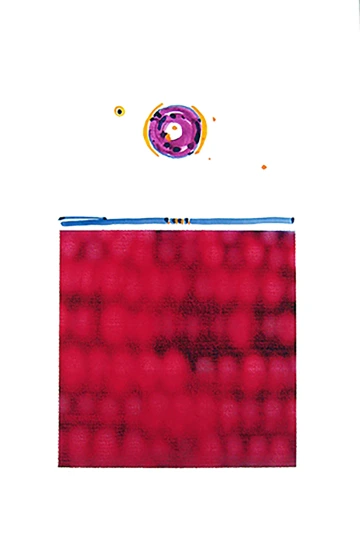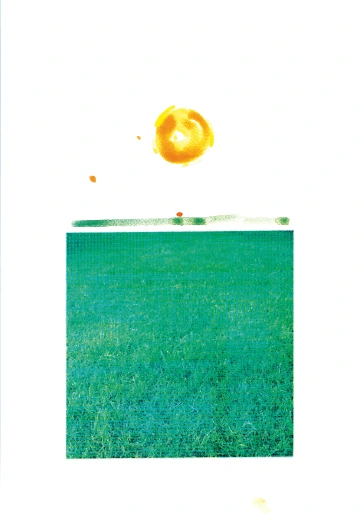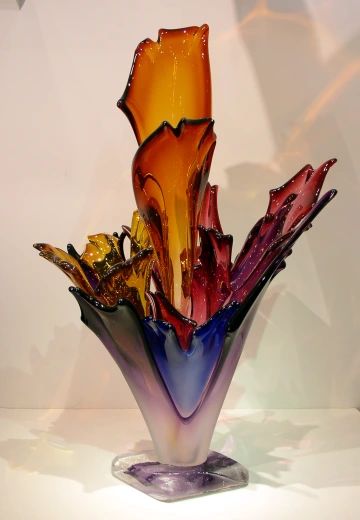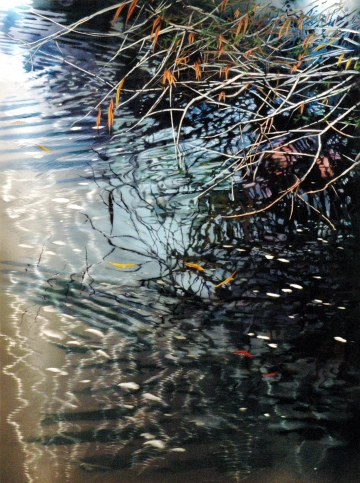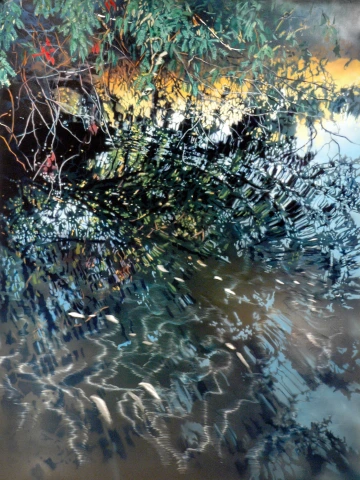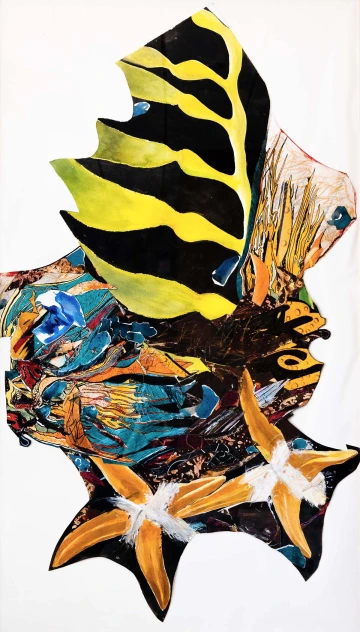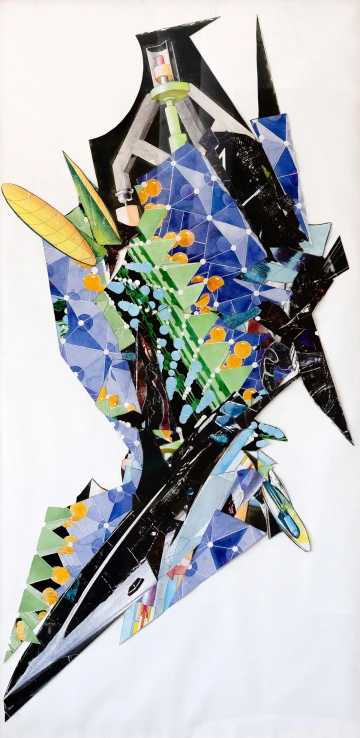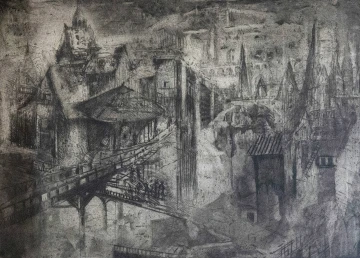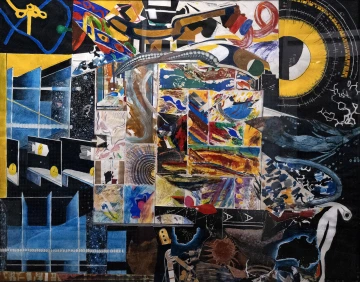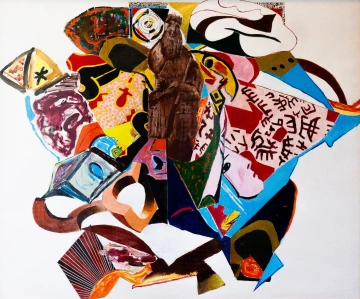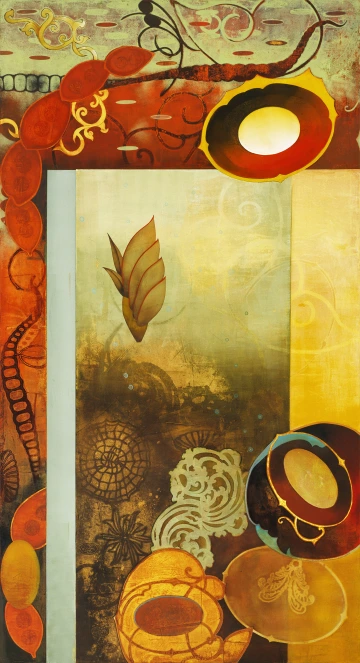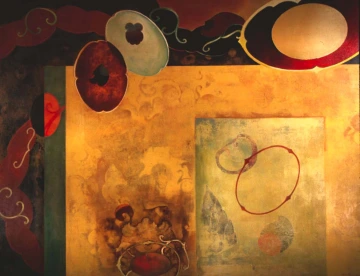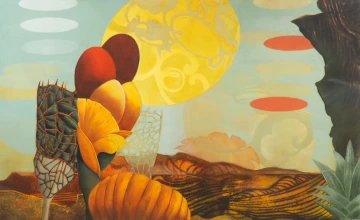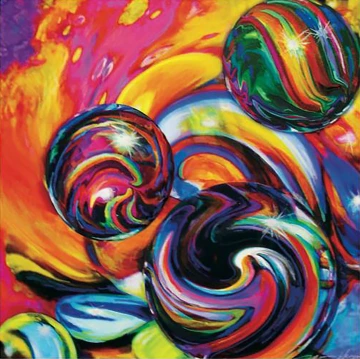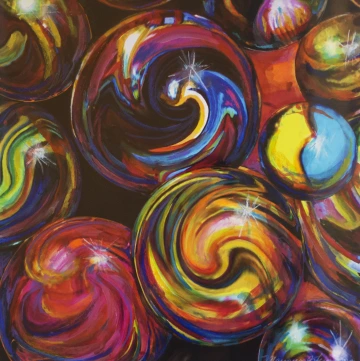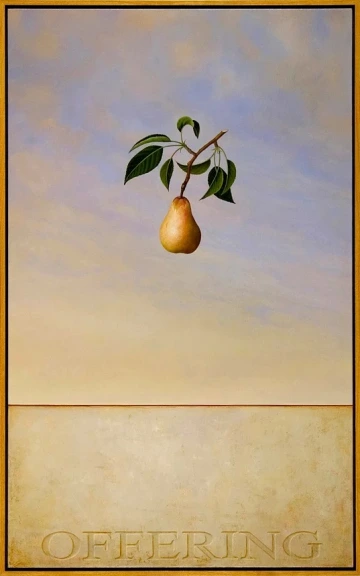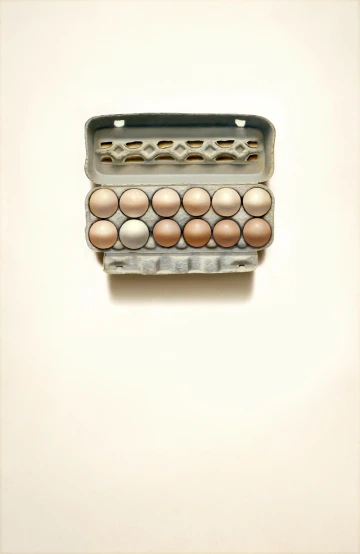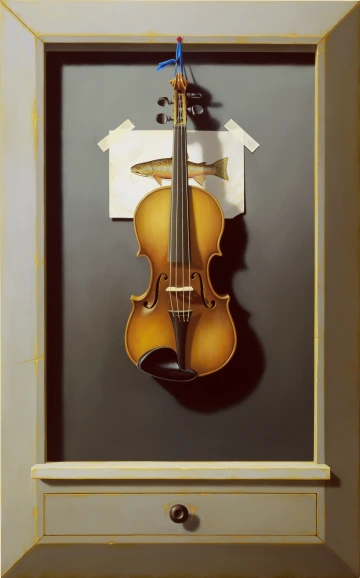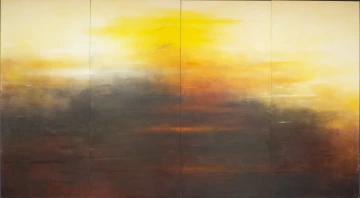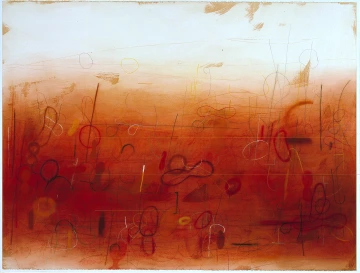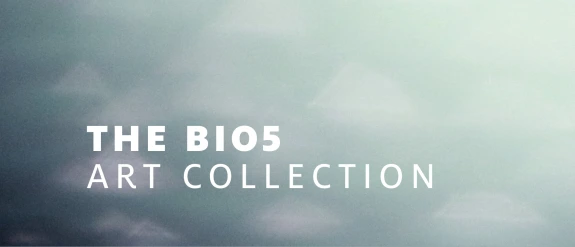
The inspiration and energy of the BIO5 art collection speaks to the possibility of discovery, in much the same way the beautiful Thomas W. Keating Bioresearch Building does for the scientists who work in it. Lively, yet calm colors and patterns combine with natural elements so that observers discover something new each time they contemplate a piece of the collection. Scientists also find the “new” in their work, inspired again and again by the interaction and flexibility afforded by the artful architecture.
The art on the walls of BIO5’s home is the work of nationally and internationally acclaimed artists, chosen for inclusion in the collection because of their visions and their outstanding bodies of work.
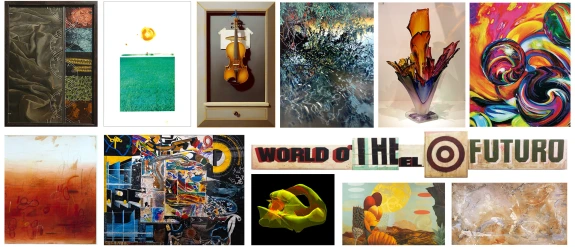
Click on the artist names below to learn more about their artwork.
DOROTHY ARNOLD

Wedding In The Fog, Acrylic on Canvas, 1982
ABOUT THE ARTIST
Dorothy Arnold works in landscape, abstraction, and figurative genres. With a constant blend of movement and a sense of a figurative presence, Arnold evokes personal memories and experiences through her paintings. The artist says, “The rhythms of nature have always influenced not only what I paint but how I paint. Be it sky, clouds, trees, or water, my hand and my body must become a part of the rhythm.”
Not inhibited by materials, she uses found objects such as glass, beads, or paper goods that come closest to representing her original ideas. The feeling of movement throughout Arnold’s work leaves the audience with a sense of transition that carries one’s eyes fluidly over the canvas.
Known nationally and internationally, the artist who is a graduate of the School of the Museum of Fine Arts, has been showing in solo and group exhibitions for over 25 years. She has received numerous awards, including a Massachusetts Artist Fellowship. In 2002, Arnold’s work embarked on a three year retrospective that began in Germany, traveled to Russia and Italy, and completed its tour in the States.
JACKSON BOELTS
BARRY ENTNER
HEATHER GREEN
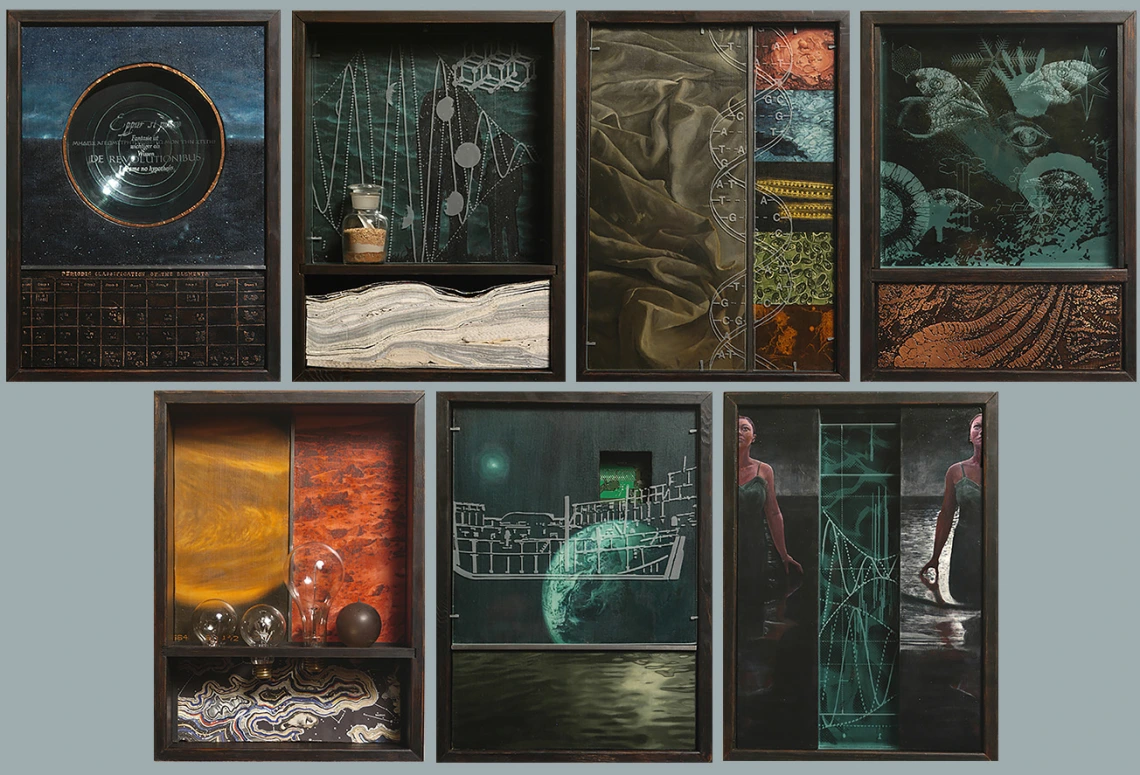
Living Cosmos,Mixed Media, 2006
ABOUT THE ARTIST
Heather Green’s projects and installations examine historical and ecological narratives of the Northern Gulf of California and Sonoran Desert. The collaborative nature of her work has allowed her to ally with a diverse range of individuals including scientists, poets and fishermen. Green is a recipient of the 2011 Arizona Commission on the Arts Artist Project Grant, the 2010 Community Foundation of Southern Arizona/Buffalo Exchange Arts Award, and the Oregon College of Art & Craft Emerging Artist Residency in Book Arts. Her work has been shown in Mexico, Uruguay, and in museums and galleries both regionally and across the United States. A native of Tucson, Heather currently works in Tempe as Assistant Professor of Book Arts at Arizona State University.
MICHAEL HOLCOMB
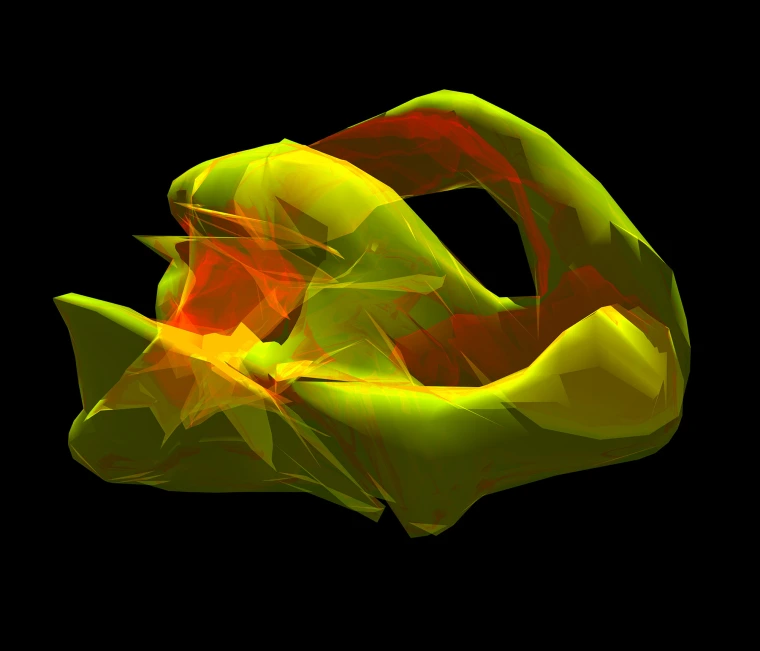
New Map of Hope,Print, 2006
ABOUT THE ARTIST
The confluence of technology, art, and culture has been Michael Holcomb’s central interest since the 1960’s. He works in collaborative teams on large, interactive design projects and as an individual artist for the creation of images. His work has been exhibited and published internationally and is held in both public and private collections.
IN THE ARTIST'S WORDS
New Map of Hopeis part of a series of abstractions I began in 2003. It has to do with using form and technology to imagine and reveal the unknown. I use computers and other electronics for most of my work and this image results from experiments with those tools. It’s kind of a serious play along aesthetic, technical and intellectual tracks that, for me, intersect with discovery and surprise. The images are a manifestation of that process. My pictorial inspirations come from disparate sources: scientific visualization, information culture, anthropology, and abstract art.
DAVID KESSLER
MARVIN LOWE
JOHN NELSON

El Futuro,Acrylic on Panel, 2007
ABOUT THE ARTIST
Nelson embraces the concept of artist as story teller, a chronicler of contemporary culture. His symbolic amalgamations, which often consist of a central image superimposed over a collage of symbols and text (anything from art criticism to nursery rhymes), make intuitive sense of the inundation that we experience in what Nelson sees as our “over-communicated, how-to world.” Bits and pieces from daily life are placed, layered, painted, sanded and repainted; in this persistent, almost obsessive editing and rearrangement we find the grammar of Nelson’s private language. And because the constant reworking of the surface and the rearranging of form describe the process of discovery and creation, the paintings end up being narrative in two ways: they ask us to invent our own stories based on the images and messages that Nelson uses, but they also present the “story” of their own creation and invite us to share the restless, somewhat anxious journey of the art-making process.
The strength of the work lies in the terrain between the narrative and the abstract, between what is immediately accessible to the viewer and what remains obscure. Masked in Nelson’s faux-naive style is a complex formalism designed to both present and obscure meaning. “Ambiguity and metaphor are central to my work,” says Nelson, “I think the ambiguous is more interesting, more engaging. Because there is always something more to discover it reveals itself more slowly and it has greater longevity.
BARBARA ROGERS
MAURICE SEVIGNY
GREGORY WEST
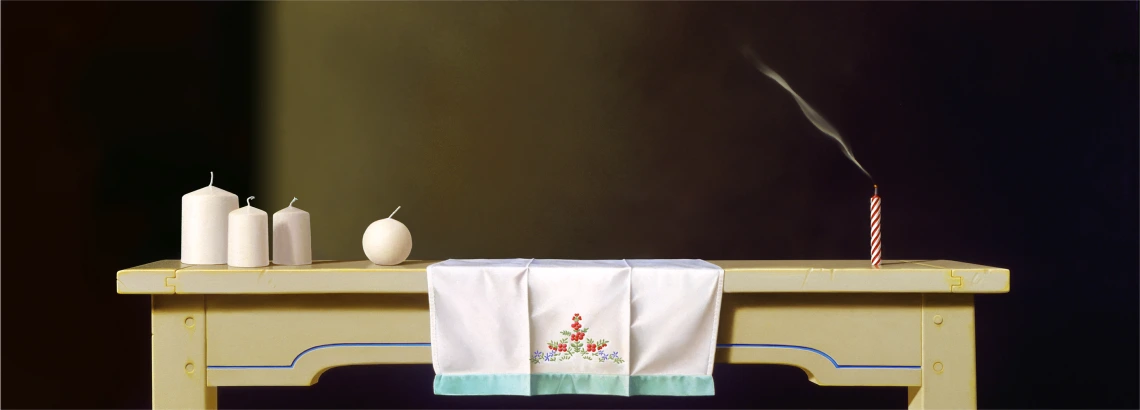
Table Wax,Giclee Print, 2007

